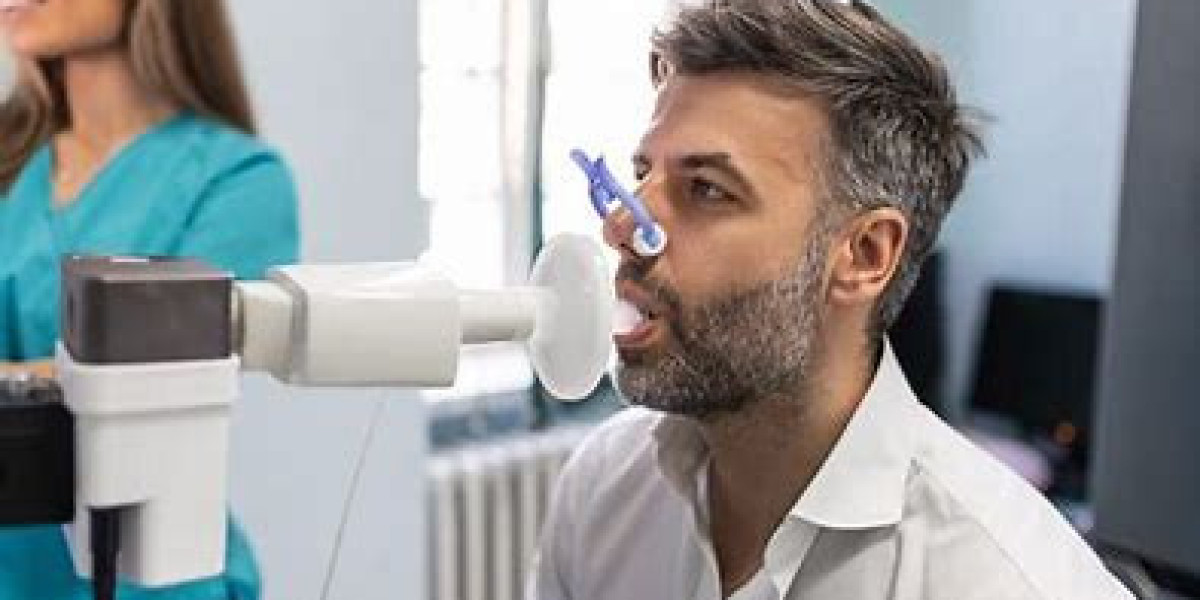Breathing is something we often take for granted—until it becomes difficult. Whether you're experiencing shortness of breath, chronic cough, or you're being monitored for a lung condition, your healthcare provider may recommend Pulmonary Function Testing (PFT). But what exactly is it, and what should you expect as a first-timer?
In this beginner’s guide, we’ll break down everything you need to know about Pulmonary Function Testing—how it works, why it’s performed, what conditions it helps diagnose, and how you can prepare for it. Whether you're a patient, caregiver, or simply curious about respiratory health, this guide is designed to empower you with clear, trustworthy, and up-to-date information.
What is Pulmonary Function Testing?
Pulmonary Function Testing (PFT) refers to a group of non-invasive tests that measure how well your lungs are working. These tests assess lung volume, capacity, rates of flow, and gas exchange. The goal is to determine how well air is moving in and out of the lungs and how efficiently oxygen enters the bloodstream.
These tests are critical tools in diagnosing and monitoring respiratory conditions such as:
Asthma
Chronic Obstructive Pulmonary Disease (COPD)
Pulmonary fibrosis
Sarcoidosis
Respiratory allergies
Lung infections
Occupational lung diseases
According to the American Thoracic Society (ATS) and the European Respiratory Society (ERS), PFTs are the gold standard in diagnosing and managing respiratory illnesses.
Why You Might Need a Pulmonary Function Test
Your doctor may recommend a PFT if you’re experiencing:
Chronic cough
Shortness of breath (dyspnea)
Wheezing
Decreased exercise tolerance
Frequent lung infections
PFTs are also commonly used to:
Evaluate lung function before surgery
Assess the effect of medications
Monitor progression of chronic lung conditions
Determine occupational lung damage in workers exposed to harmful chemicals or dust
Types of Pulmonary Function Tests
Pulmonary Testing includes several types of assessments. Here are the most common ones:
1. Spirometry
This is the most frequently used PFT. It measures how much air you can breathe in and out, and how quickly you can exhale. It’s helpful in diagnosing conditions like asthma and COPD.
Key Metrics:
FEV1 (Forced Expiratory Volume in one second): Measures how much air you can forcefully exhale in one second.
FVC (Forced Vital Capacity): The total amount of air exhaled during the test.
FEV1/FVC Ratio: Helps differentiate between obstructive and restrictive lung diseases.
2. Lung Volume Measurement (Plethysmography)
This test determines the total amount of air your lungs can hold. It can detect restrictive lung diseases such as pulmonary fibrosis or scoliosis-related breathing limitations.
3. Diffusion Capacity Test (DLCO)
This measures how well oxygen and carbon dioxide are exchanged between your lungs and blood. It's crucial for diagnosing interstitial lung diseases and evaluating pulmonary hypertension.
4. Bronchoprovocation Test
Also known as a methacholine challenge test, it is used to diagnose asthma by triggering slight constriction in the airways to see how reactive your lungs are.
What to Expect During the Procedure
If you’ve never had a pulmonary function test before, knowing what happens during the process can ease your anxiety. Here’s a step-by-step overview:
Before the Test:
Avoid smoking for at least 4–6 hours.
Do not eat heavy meals right before testing.
Wear loose, comfortable clothing.
Follow your doctor’s instructions on whether to stop certain medications.
During the Test:
You'll be seated and fitted with a nose clip to ensure breathing only through your mouth.
You'll be asked to inhale deeply and exhale forcefully into a mouthpiece connected to the spirometer.
Some tests may involve inhaling medication (like a bronchodilator) to see if lung function improves afterward.
You may be asked to repeat the test multiple times to ensure consistent results.
After the Test:
You can resume normal activities immediately.
Results are often available the same day and reviewed by your pulmonologist.
How Long Does Pulmonary Function Testing Take?
Most PFTs take between 30 to 60 minutes, depending on the number of tests ordered. Spirometry alone typically takes around 15–20 minutes. If additional testing like diffusion or lung volume measurements is required, expect a longer session.
Are There Any Risks?
PFTs are safe, low-risk procedures. Some people may experience:
Dizziness or lightheadedness
Coughing or shortness of breath
Fatigue (especially if you have a lung condition)
However, serious complications are extremely rare. If you feel unwell during the test, always inform the technician immediately.
Understanding Your Results
Your results will usually be compared to normal values based on age, sex, height, and ethnicity. Abnormal results can point to either:
Obstructive lung disease: Reduced airflow (e.g., asthma, COPD)
Restrictive lung disease: Reduced lung volume (e.g., fibrosis)
Your physician will interpret the findings, possibly alongside imaging or blood tests, to confirm a diagnosis and outline treatment options.
Real-World Data and Statistics
According to the Global Initiative for Chronic Obstructive Lung Disease (GOLD), COPD affects over 300 million people worldwide and is the third leading cause of death. Spirometry remains the most effective early diagnostic tool.
Meanwhile, the CDC reports that asthma affects approximately 25 million Americans, and timely pulmonary testing can help reduce emergency visits and improve quality of life.
Commercial Relevance
With respiratory conditions on the rise, these Function Testing is increasingly essential in clinical and outpatient settings. Clinics offering Pulmonary Function Testing near me or spirometry testing services are seeing growing demand, particularly among:
Senior citizens
Smokers and ex-smokers
Individuals with long-term exposure to air pollution
Post-COVID-19 patients with lingering lung symptoms
For diagnostic centers, investing in PFT equipment and trained respiratory therapists can enhance service offerings and meet community needs more effectively.
FAQs
1. Is these Function Testing painful?
No, the test is non-invasive and generally painless, although it may require some physical effort.
2. Can children undergo PFT?
Yes, children above the age of 5 can typically perform PFTs with proper guidance and support.
3. How often should I get PFT done?
It depends on your condition. Patients with chronic diseases like COPD may need it annually, while others may only need it for initial diagnosis.
4. Can PFT detect lung cancer?
While PFT doesn’t diagnose cancer, it can identify impaired lung function, which may prompt further investigation like CT scans.
5. Where can I get Pulmonary Function Testing?
Most hospitals, respiratory clinics, and diagnostic centers offer PFT. Search for Pulmonary Function Testing near me or ask your doctor for a referral.
Final Thoughts
These Function Testing is a crucial tool in assessing and managing respiratory health. Whether you're being evaluated for a chronic lung condition or undergoing a routine health check, understanding what to expect from PFT can make the process less intimidating and more informative.
Early detection of lung issues leads to better outcomes—so if your doctor recommends a PFT, don’t delay.
Have you scheduled your pulmonary function test yet?







